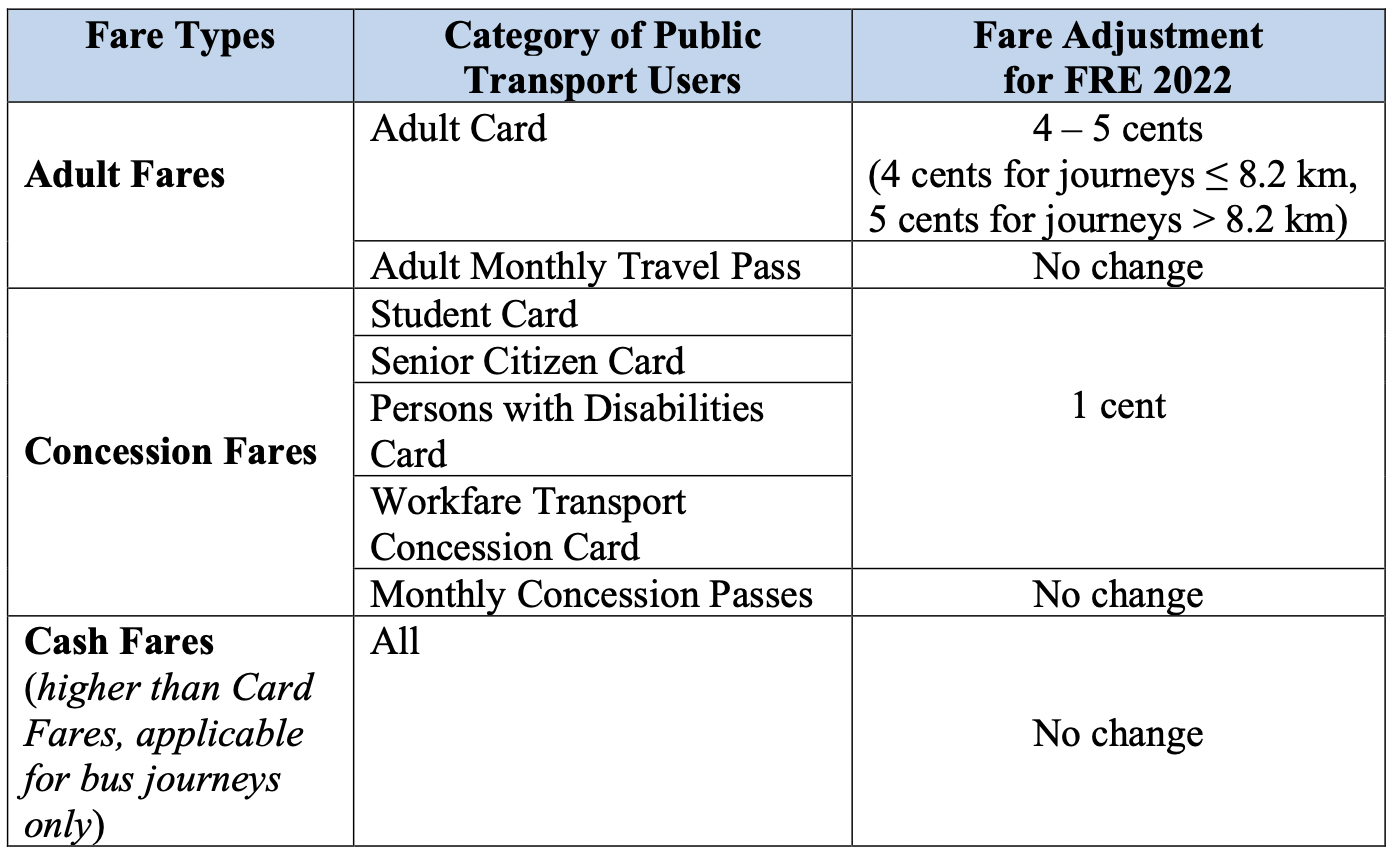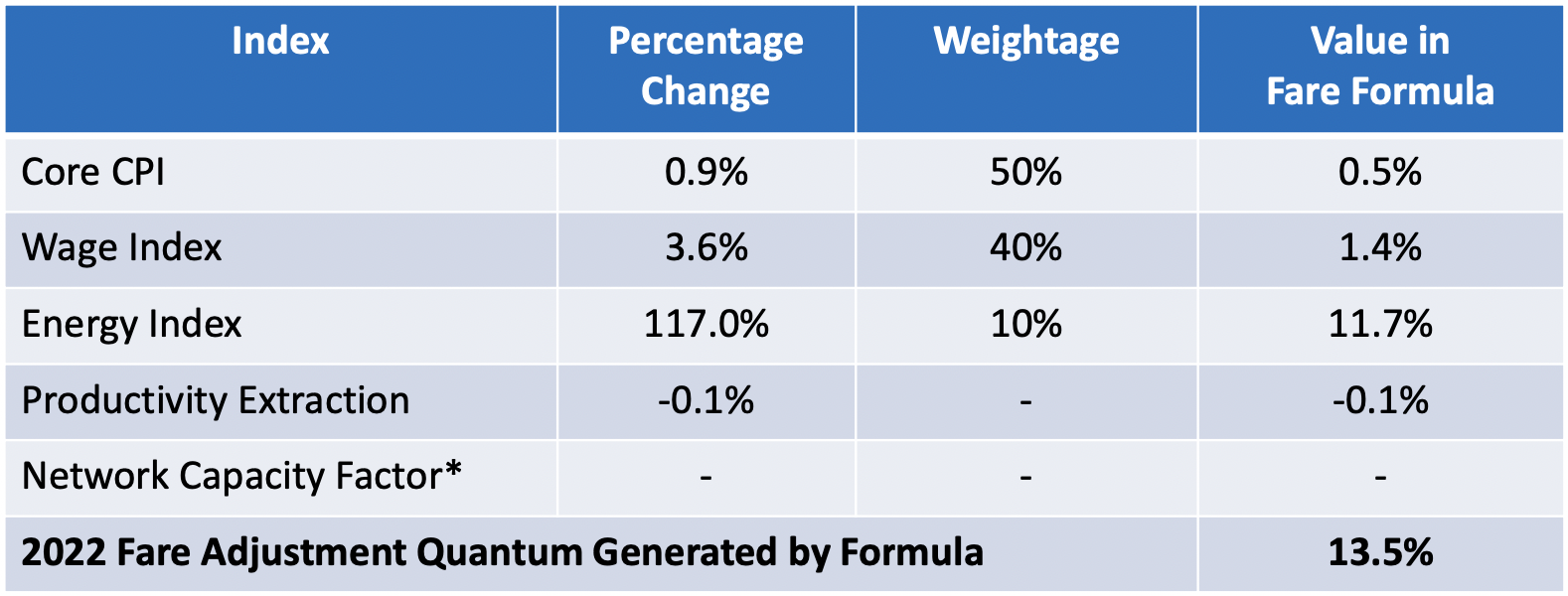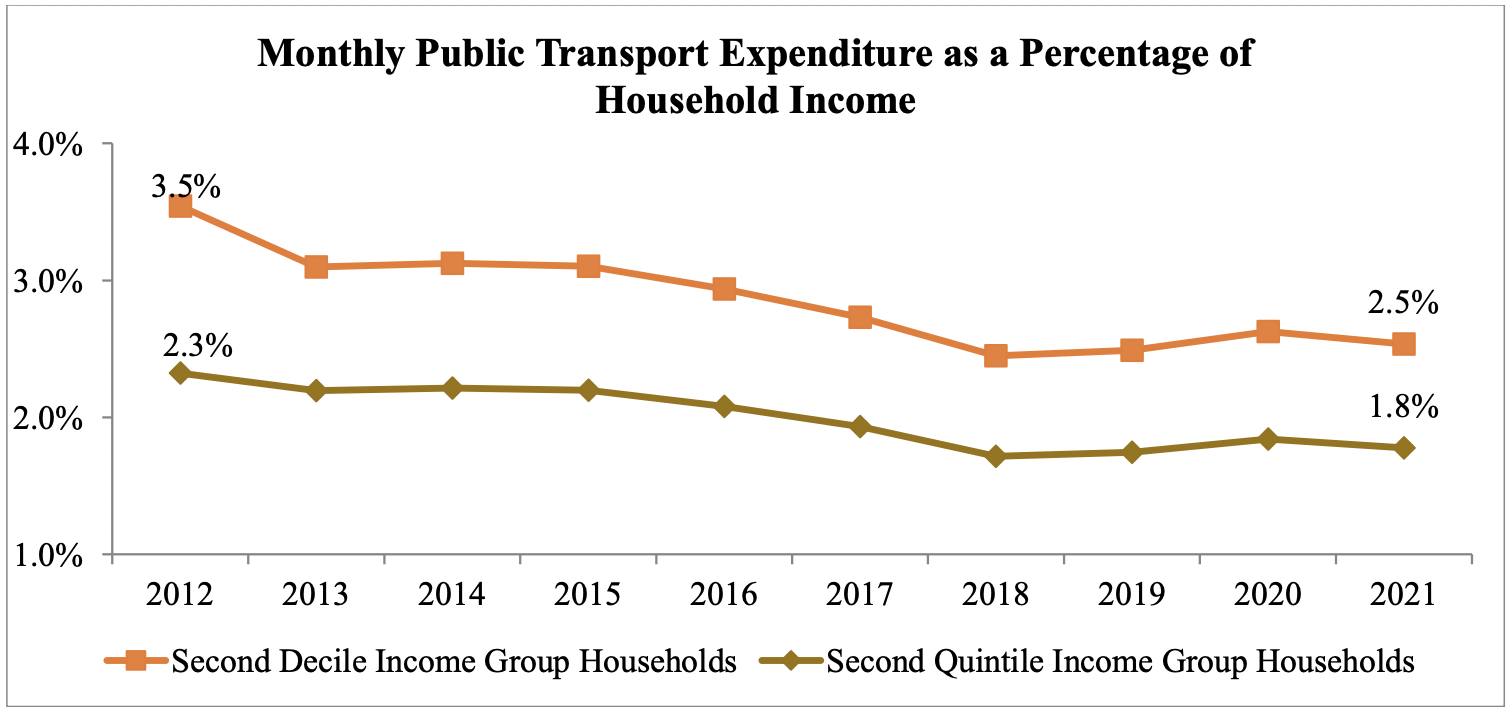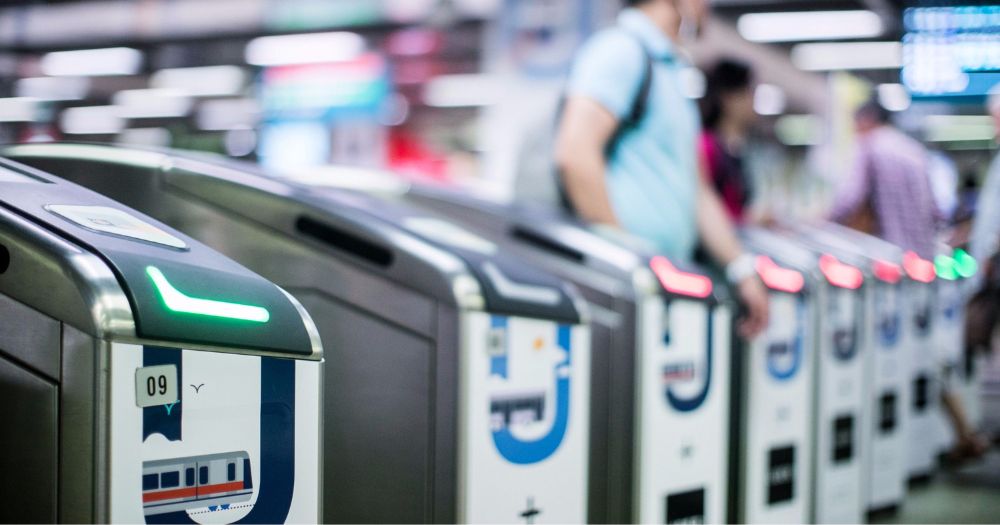Follow us on Telegram for the latest updates: https://t.me/mothershipsg
The Public Transport Council (PTC) has completed its annual fare review exercise (FRE) and announced on Wednesday (Oct. 12) that it will grant an increase of 2.9 per cent for public transport fares.
This translates to an increase of 4 to 5 cents for adult fares, depending on the distance travelled.
For journeys 8.2km or shorter, adult fares will go up by 4 cents.
For journeys longer than 8.2km, adult fares will go up by 5 cents.
"54 per cent of adults' journeys are below 8.2km", said Tan Kim Hong, Chief Executive of PTC.
Concession fare increase capped at 1 cent
For concession fares, the increase will be capped at 1 cent.
Prices for monthly concession passes, adult monthly travel card, and bus cash fares will remain unchanged.
The new fare structure will take effect on Dec. 26, 2022.
Here are the fare adjustments for different fare types:
 Image via PTC.
Image via PTC.
Government to subsidise additional S$200 million
The total fare adjustment quantum derived from this year's exercise is 13.5 per cent, the highest quantum derived in a fare review exercise since 2005, according to Tan.
Both SBS Transit and SMRT had applied for a 13.5 per cent fare adjustment, citing increased operational costs, rising inflation, and manpower crunches, according to the PTC.
With PTC deciding to grant a fare adjustment quantum of 2.9 per cent, the remainder of the fare adjustment quantum (10.6 per cent) will be deferred to future FREs.
The government will provide an additional S$200 million in subsidies in 2023 to enable this.
This is on top of annual government subsidies of over S$2 billion.
Energy index contributed 11.7 per cent of quantum
The 13.5 per cent quantum was calculated using the formula that PTC has adopted since 2018:
This year's higher quantum is due to a higher contribution from the formula's energy index component, of 11.7 per cent, owing to high global oil and gas prices, the PTC wrote.
NCF excluded this year
The Network Capacity Factor (NCF) was also excluded in this year's calculation.
Explaining this decision, the PTC revealed that ridership in 2021 was comparable to 2020, due to the Covid-19 pandemic.
In last year's FRE, the NCF calculated for the entire 2020 was 50 per cent, which would have led to a 60 cents increase in fares had exceptions not been made.
Only ridership numbers from Jan. 2020 were included in last year's calculation of the NCF.
In 2021, while ridership dropped, operators continued to run public transport services at pre-pandemic levels.
Thus, for 2022's review, supply of public transport outstripped demand, which will similarly lead to a high NCF.
PTC member, Vincent Chua, explained the purpose of the NCF, which was first introduced in 2018:
The purpose … is to track changes in the system operating cost due to change in capacity, relative to ridership. The idea is that if we find additional capacity, relative to ridership, there will be extra costs of maintenance, it will involve extra manpower, extra energy costs, and other costs. We need to share, as commuters, we need to share these costs, and NCF does that.
It was not designed to track short-term fluctuations in public transport demand and supply during exceptional periods, such as during the pandemic, the PTC reiterated.
Here are the inputs that were used to derive this year's fare adjustment quantum:
 Image via PTC.
Image via PTC.
The maximum fare adjustments allowed in past years were 7 per cent (2019), 0 per cent (2020) and 2.2 per cent (2021).
Operators to contribute to Public Transport Fund
The expected increase in revenue from the fare changes is S$7.4 million for SBS Transit and S$15.4 million for SMRT, PTC wrote in its press release.
Bus services and the Thomson East-Coast line will also generate an additional S$27.5 million for the Land Transport Authority following the fare changes.
Operators will be required to contribute a total of S$3.44 million (S$0.37 million from SBS Transit and S$3.07 million from SMRT) towards the Public Transport Fund.
This equates to about 5 per cent and 20 per cent of the respective operators' expected revenue increase following the price hike.
This fund will be used to support households with monthly household income per person of not more than S$1,600.
This will come in the form of Public Transport Vouchers (PTVs) worth S$30 each and is expected to be handed out to 600,000 households.
Some fare increase necessary to meet operational costs
Janet Ang, Chairperson of PTC, said at the announcement on Wednesday (Oct. 12) that the PTC "recognises concerns that Singaporeans have over increasing costs of living and the impact of rising inflation."
However, amidst rising costs and economic volatility, there is an "imperative to ensure that public transport continues to be reliable, convenient and affordable for all Singaporeans", Ang added.
"We seek commuters' understanding that some fare increase is still necessary to meet rising energy costs, and sure that we can continue to provide better salaries and training for about 20,000 Public Transport workers."
"Public transport fares continue to stay affordable", PTC shared.
 Image via PTC.
Image via PTC.
The PTC tracks fare affordability by looking at public transport expenditure as a percentage of household income for households in the "second quintile income group" (21st to 40th percentile), which represents the "average public transport user".
It also looks at households in the "second decile income group" (11th to 20th percentile), which represents lower-income households.
Responding to Mothership's queries, Ang shared that the PTC currently measures affordability using numbers from the 2013 FRE as a baseline.
If you like what you read, follow us on Facebook, Instagram, Twitter and Telegram to get the latest updates.
